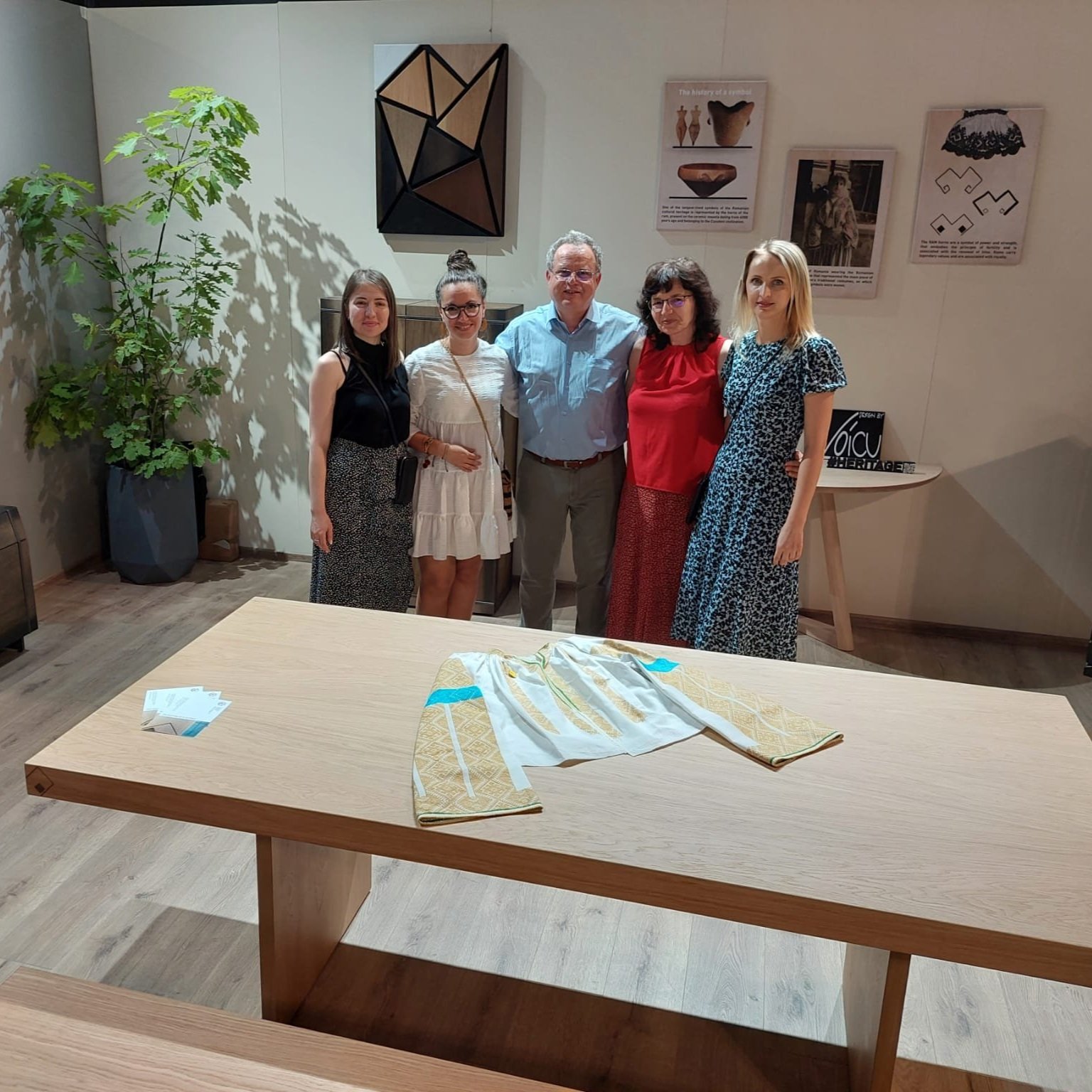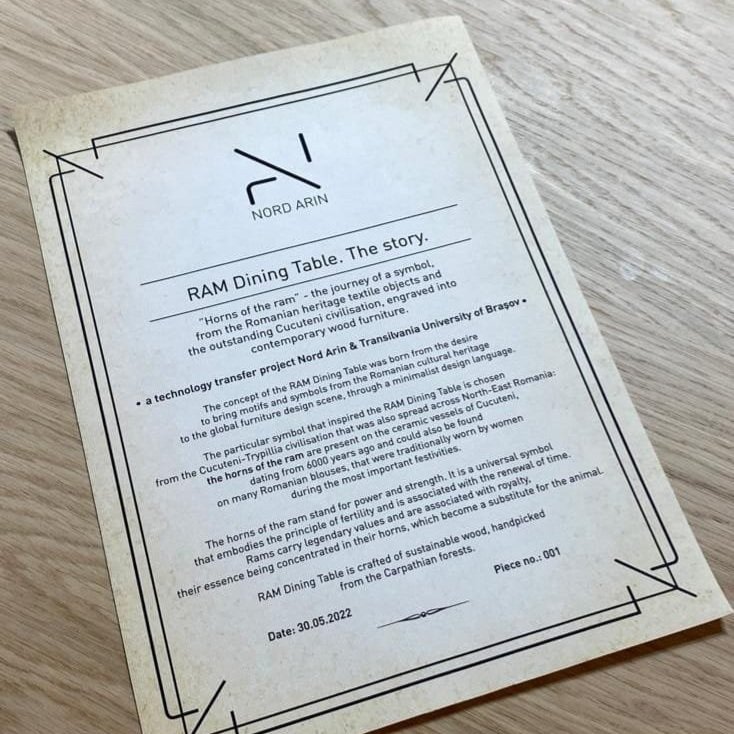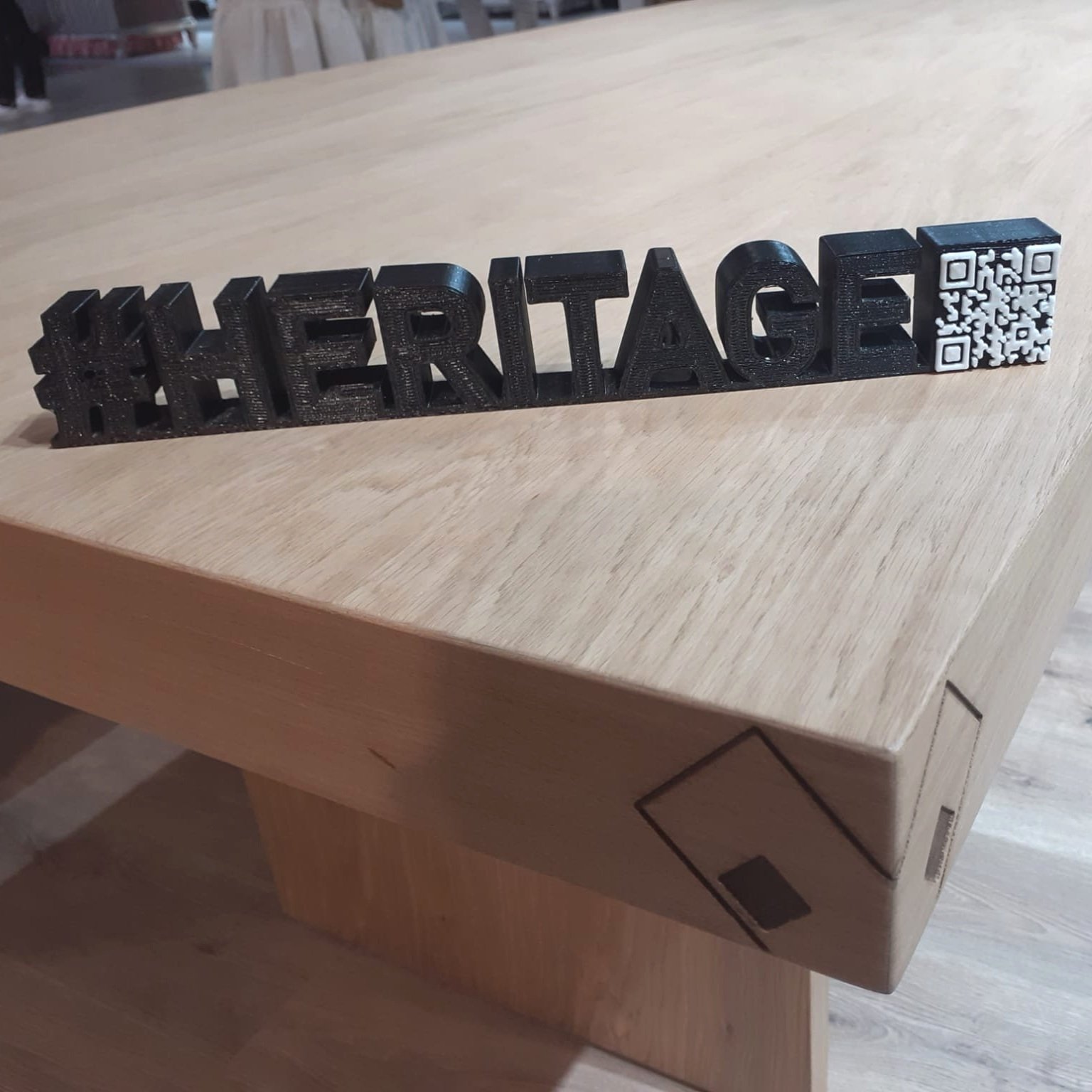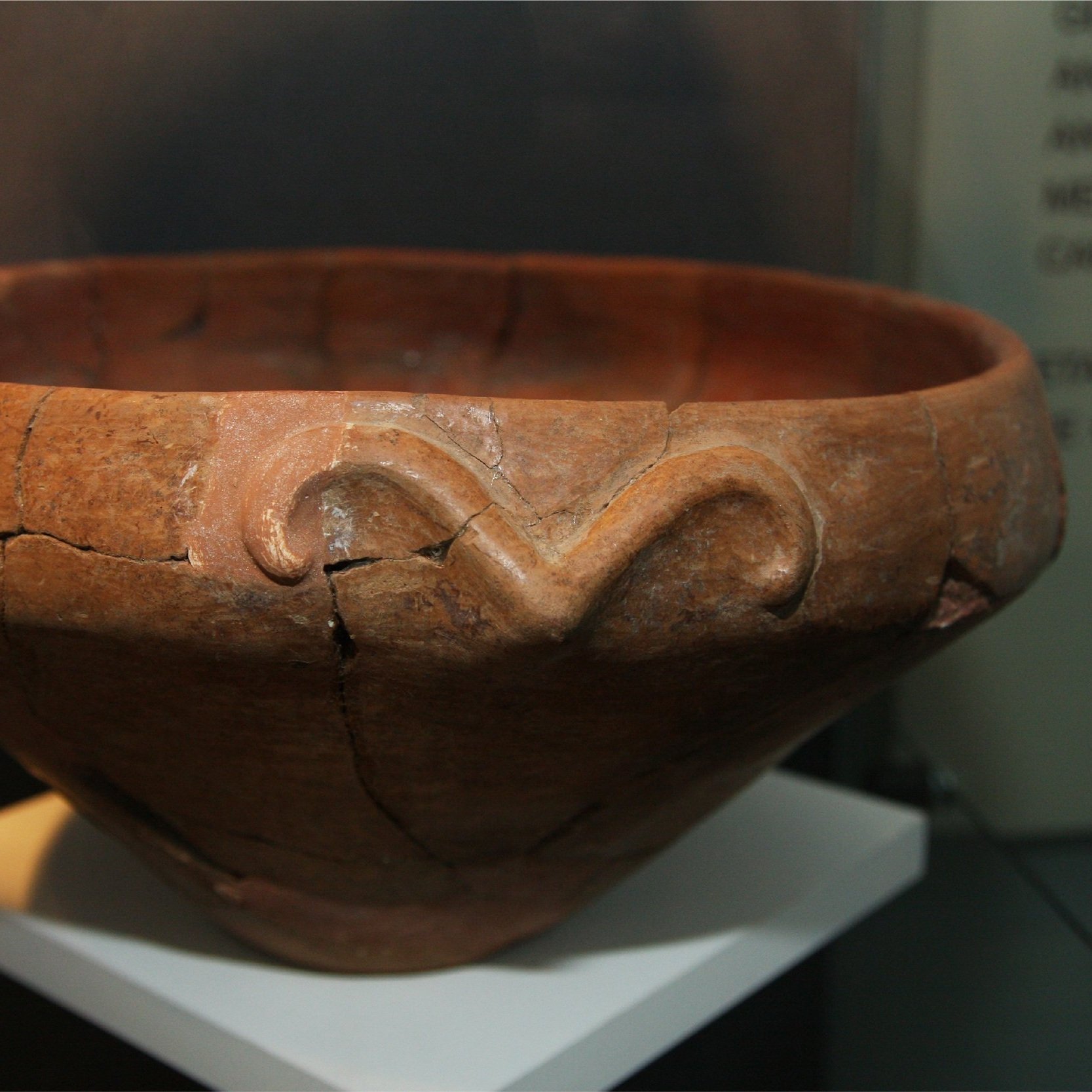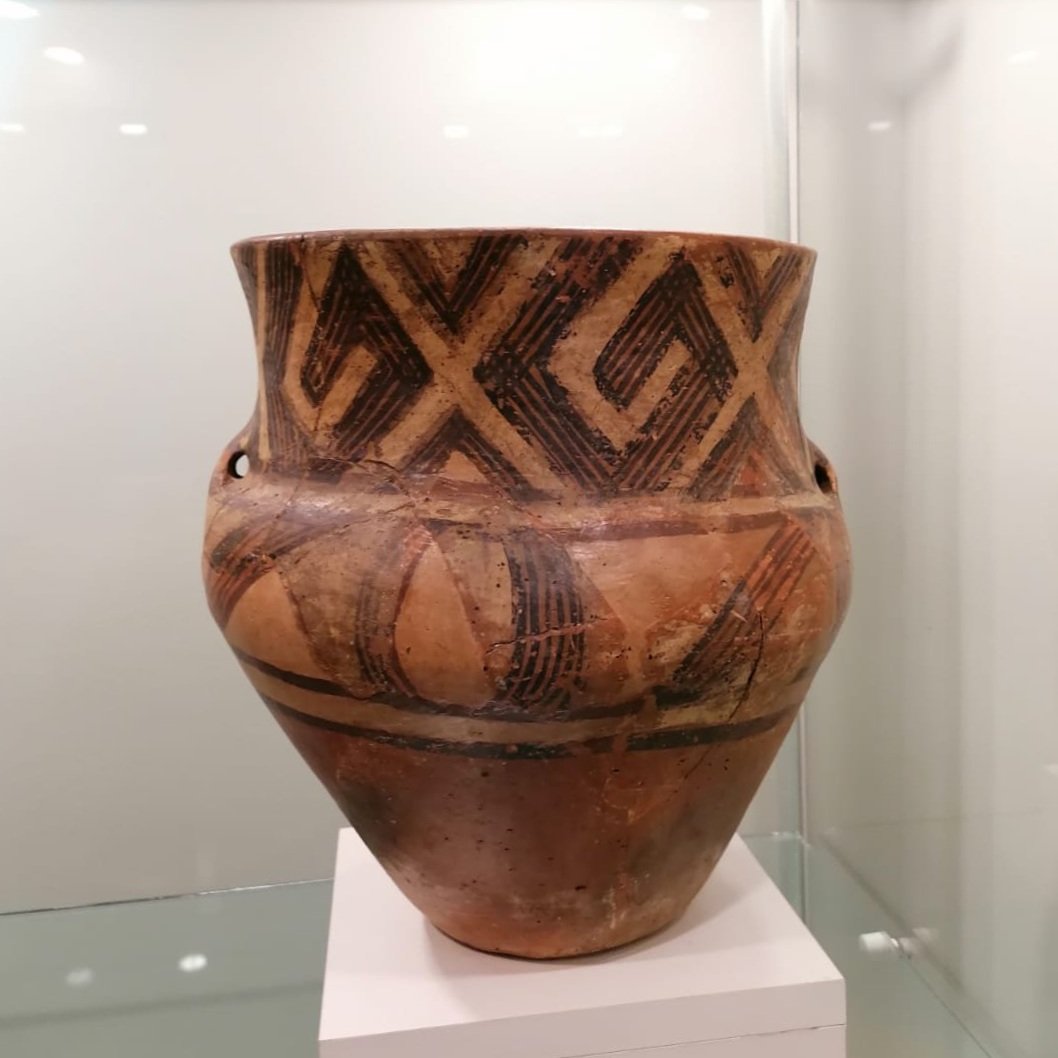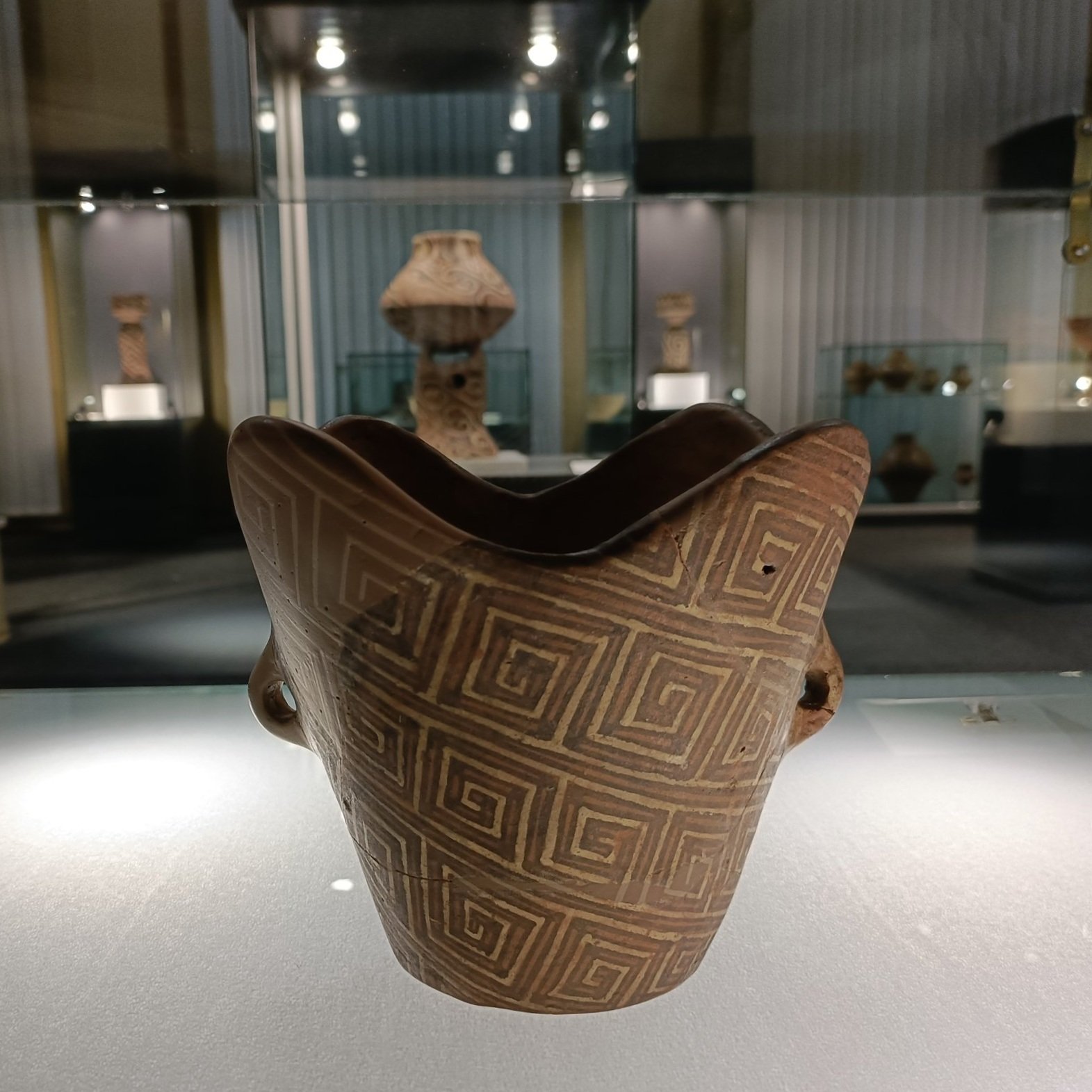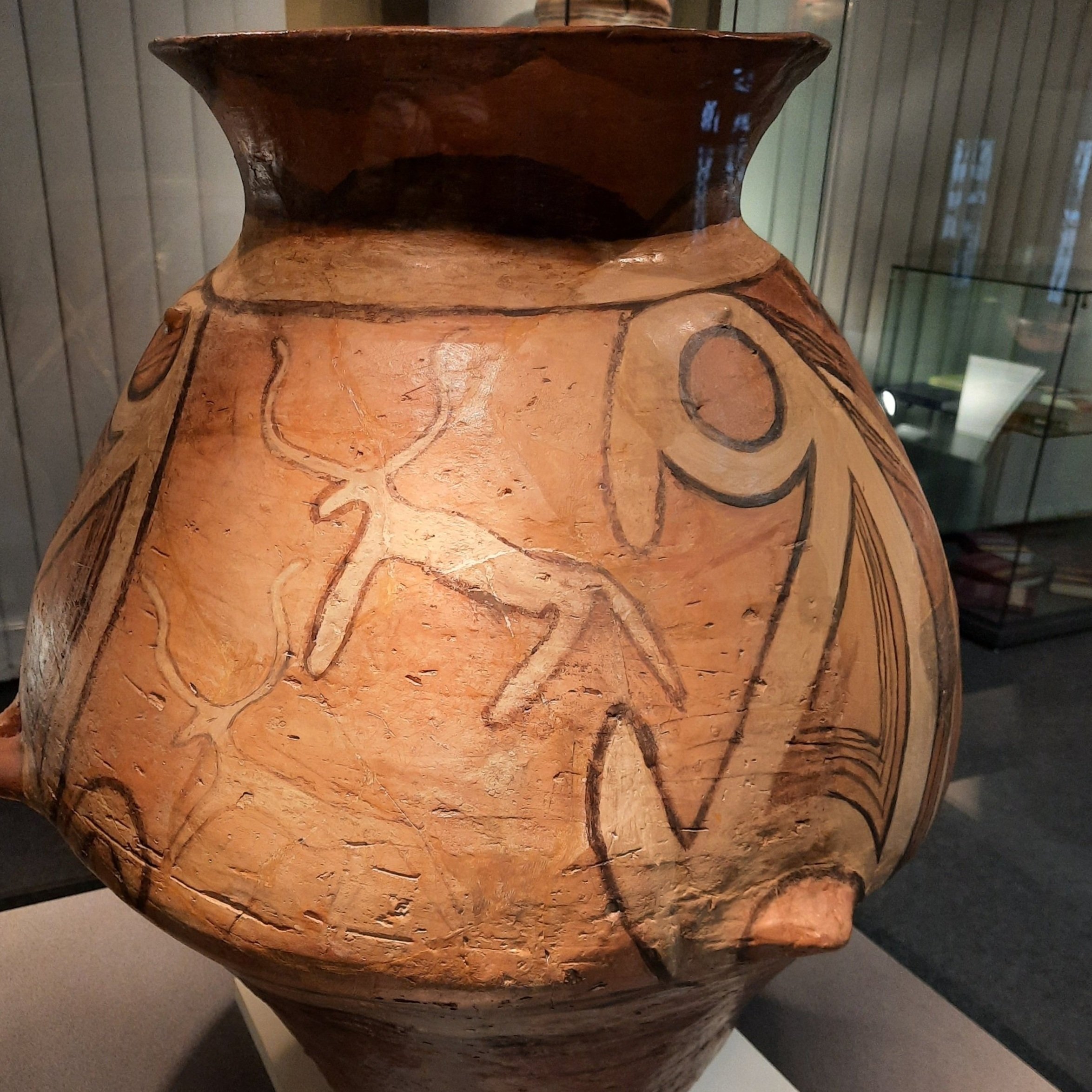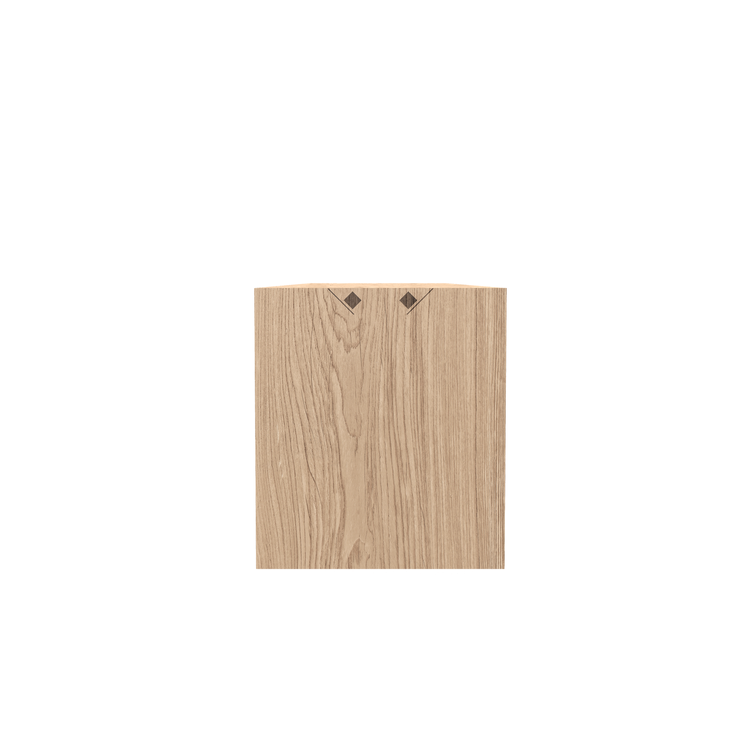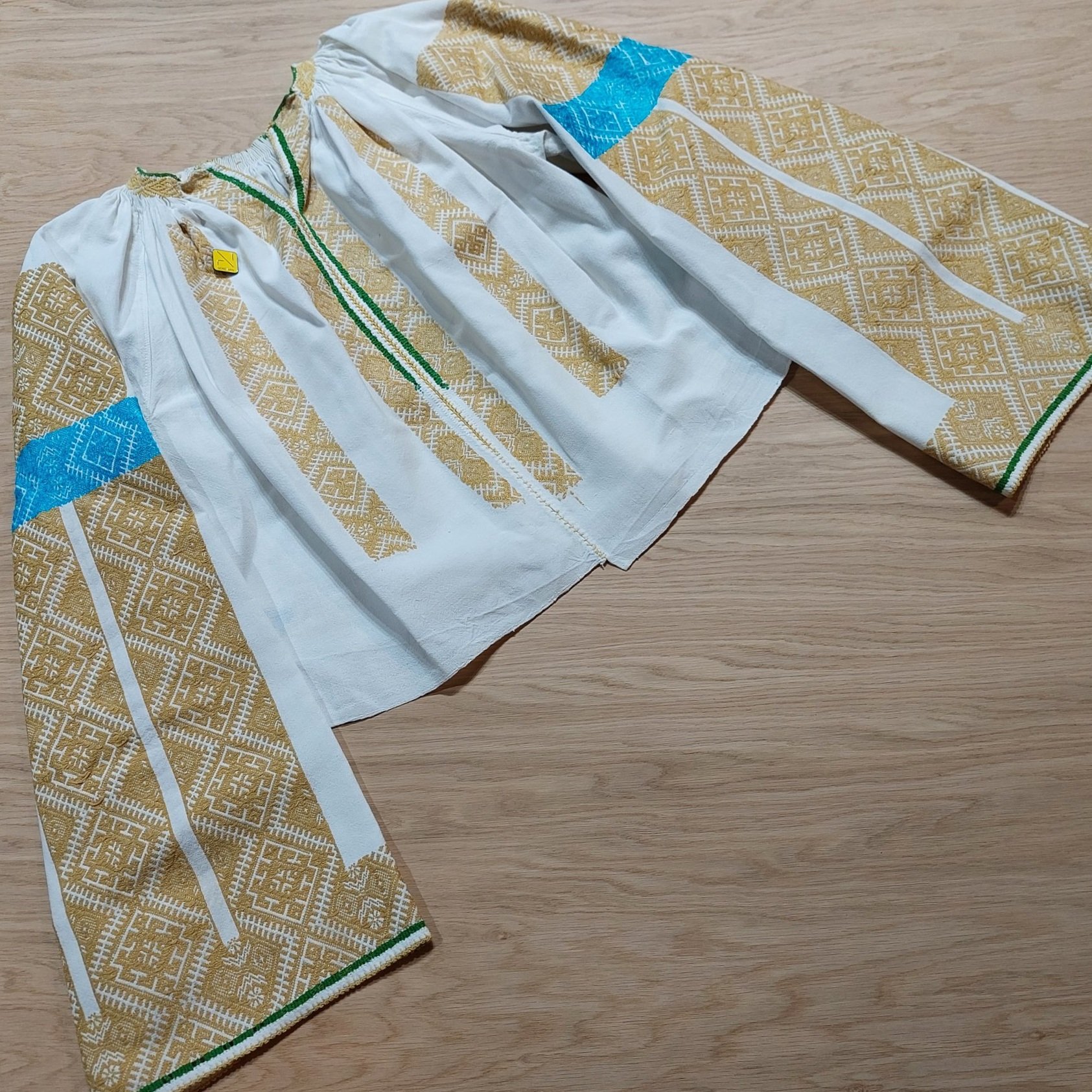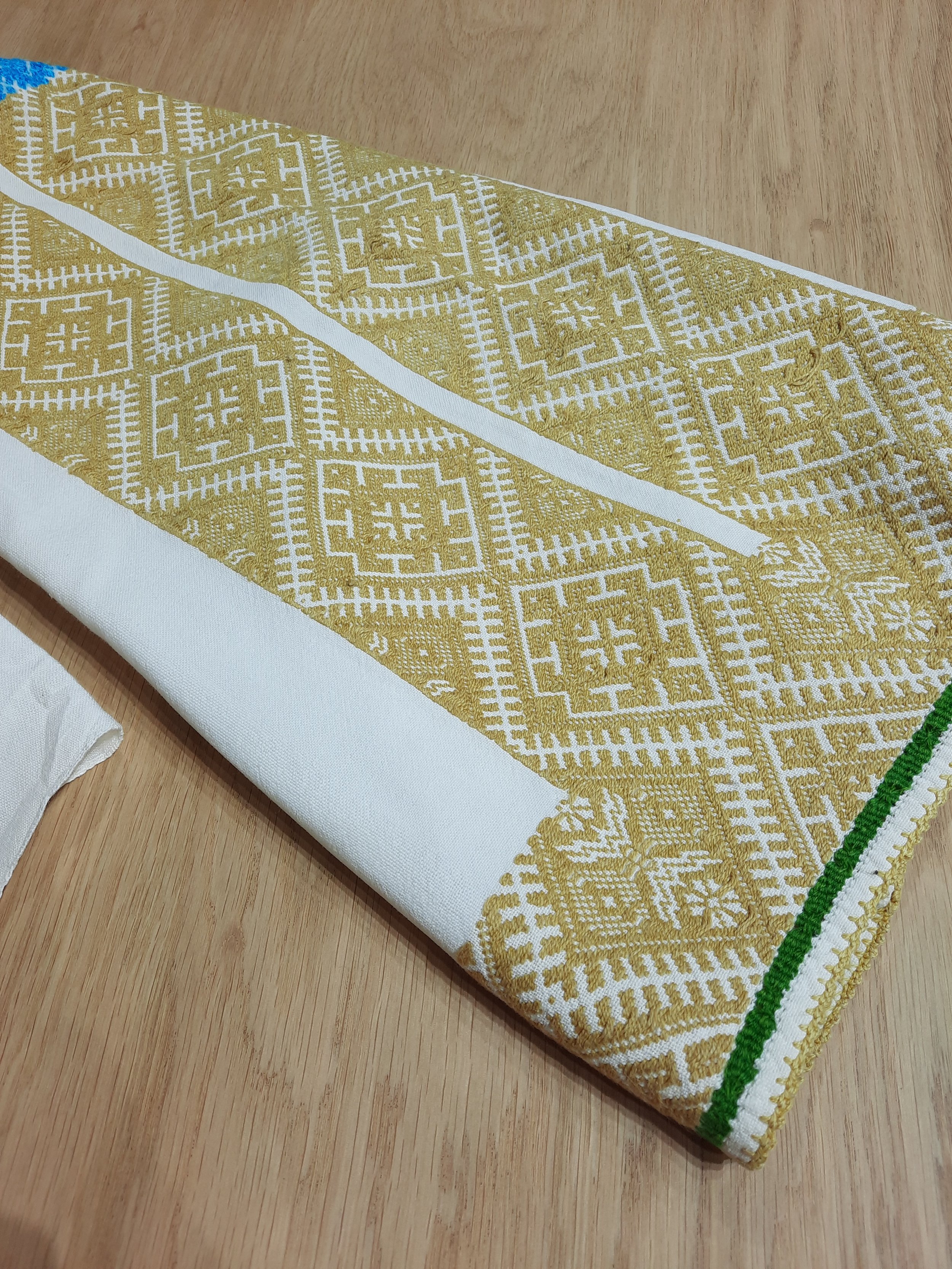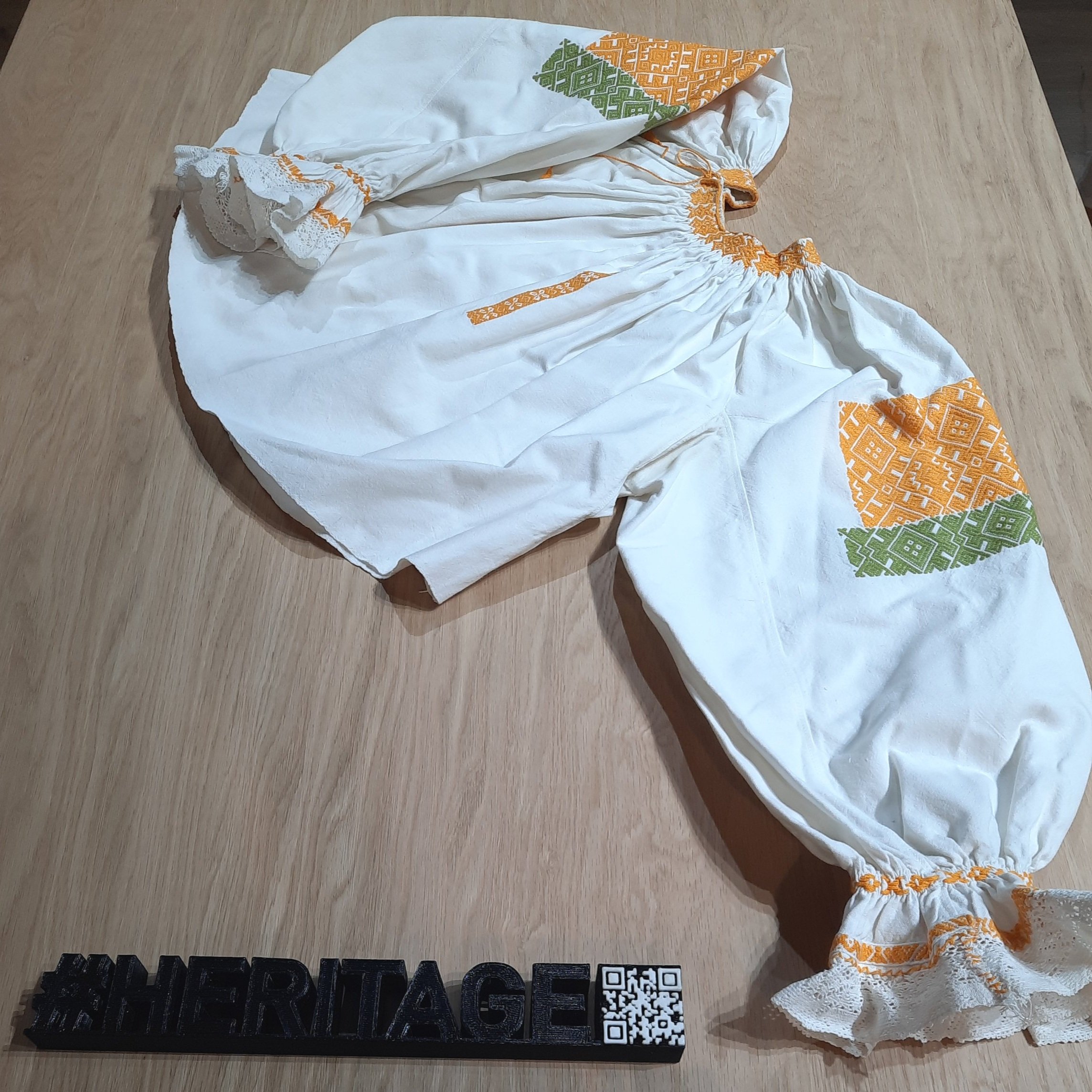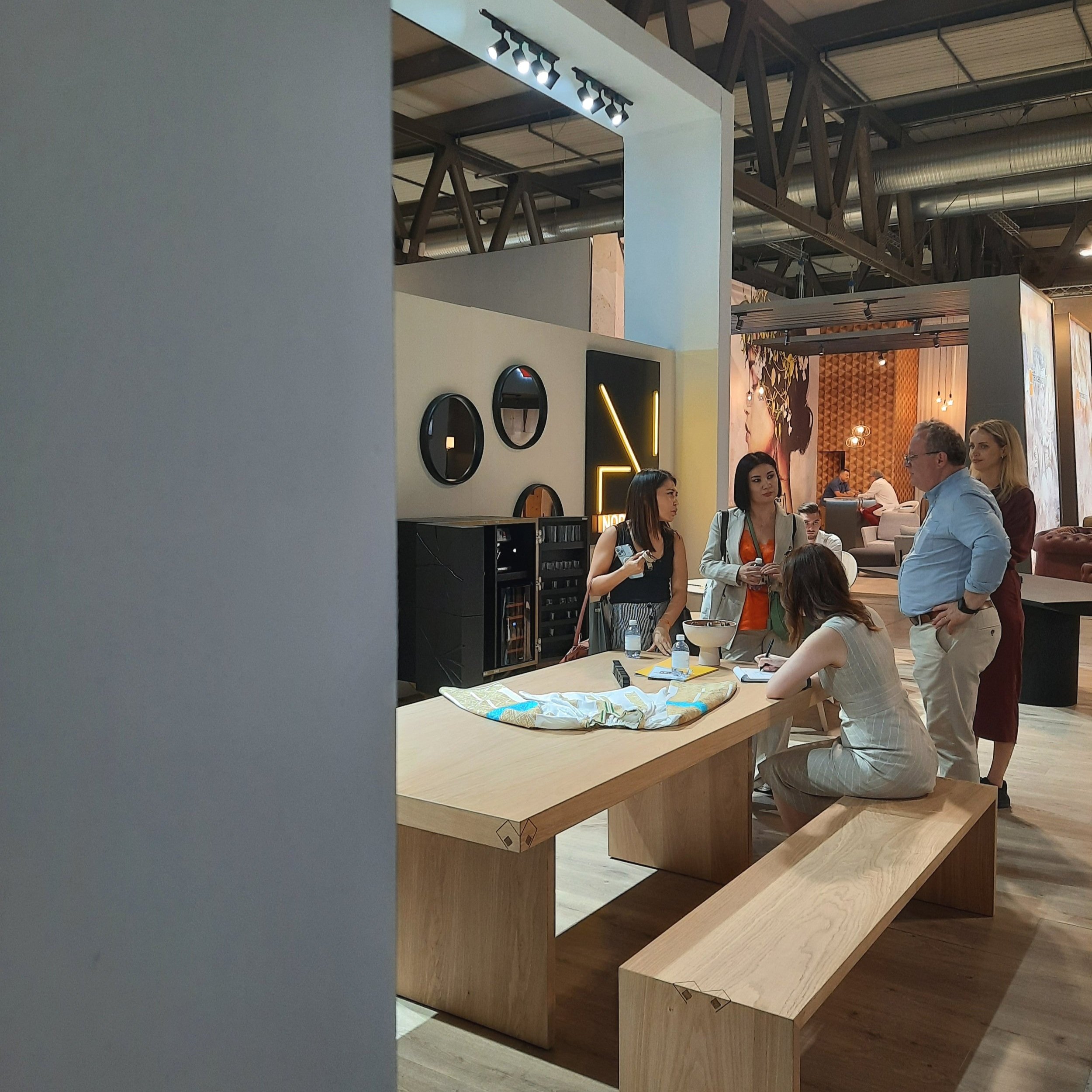RAM. The journey of a symbol
Our roots define us. Our history makes us proud. Our heritage empowers us.
At Nord Arin, we believe in furniture with a story and we carry a deep respect for our cultural heritage and national values. During the creation process of a new furniture concept or collection, we look back on our roots and take inspiration from the history of the places around us, from sculptural and architectural landmarks as well as symbols and motifs that have been carried throughout centuries or even millennia, by different civilizations and generations.
RAM Dining Table and Bench at
Salone del Mobile 2022
At the 60th edition of Il Salone,
Nord Arin launched the RAM dining set, inspired by ancient symbols collected from the Cucuteni civilization.
For Salone del Mobile 2022, we wanted to bring to the global furniture design scene one of the longest-lived symbols dating from the Cucuteni civilization, that travelled through time and was also passed to the Romanian textile heritage. Within a technology transfer project developed in partnership with The Faculty of Furniture Design and Wood Engineering, Transilvania University of Brașov, the RAM concept was born - an oak furniture dining set with a strong symbolic meaning and contemporary aesthetic values, tributary of the idea of power, determination, courage, and masculinity. Our designers and marketing specialists, together with the passionate university teachers made up a research team who worked together for over four months in order to build RAM, translate the horns of the ram into a relatable, contemporary symbol and transfer it into a minimalist furniture concept.
”Collecting traditional motifs from objects belonging to the Cucuteni civilization and our textile heritage, drawing them in digital format and transferring them to tangible and modern products, through creative fields such as fashion, graphic design, textile industry, crafts and last but not least the furniture industry represent an additional method of preservation in addition to conventional conservation; together, they serve for passing the motifs from generation to generation, enriched over time”, says Eng. PhD. Student Antonela Lungu, part of the university research team. ”The takeover of symbols and motifs into furniture can be seen as continuous recycling of ideas or knowledge from the past, which means a mixture of old and new, of tradition and innovation.”
Horns of the ram - a symbol traveling throughout millennia.
Found on the richly decorated ceramic vessels dating from 6000 years ago of the Cucuteni civilization, the horns of the ram are a symbol of power and strength, that embodies the principle of fertility and is associated with the renewal of time.
Horns of the ram date back to the times of Cucuteni-Trypillia, a civilization spread in southeastern Transylvania, Moldova, and western Ukraine, well-known for its advanced social organization and extremely well-preserved pottery and figurines unique in Europe. Found on the richly ornated ceramic vessels dating from 6000 years ago of the Cucuteni civilization, the horns of the ram is a symbol of power and strength, that embodies the principle of fertility and is associated with the renewal of time. Rams carry legendary values and are associated with royalty, their essence being concentrated in their horns, which become a substitute for the animal.
Moving closer to the present moment, horns of the ram were found on many Romanian blouses, sewn on cotton or linen. In the past days of the traditional Romanian village, the Romanian blouse represented the main piece of clothing in women’s traditional costumes, on which women used to sew carefully chosen symbols, meant to provide the community with relevant information, such as the area or village they come from, their age, or marital status.
„Horns of the ram, widespread in Muntenia, Oltenia, Banat, Hunedoara, Carpathian areas, Dobrogea, and Bucovina, is one of the oldest motifs in the ornamentation of Romanian folk textiles on both sides of the entire Carpathian chain”, adds Antonela Lungu. ”Transposed into geometric representations, it is found in the decoration of shirts worn by women being sewn in cross stitch and satin stitch techniques or waved.”
Romanian blouses particularly grew in popularity during the last decade, as people relearn to appreciate authentic pieces and capitalize on their national heritage. Even Queen Marie of Romania promoted the traditional costume worldwide on every occasion. Both as a princess and as a queen, she proudly wore Romanian folk costumes or blouses embroidered with traditional motifs, veils with flowers, and other accessories specific to the traditional costume.
Queen Marie of Romania
promoted the folk costume worldwide on every occasion. Both as a princess and as a queen, she proudly wore Romanian blouses embroidered with traditional motifs, veils with flowers, and other accessories specific to the traditional costume.
RAM Dining Set – including a dining table and bench – is crafted out of sustainable hardwood, on a sturdy minimalist structure, defined by straight lines and balanced proportions. This minimalism creates space and freedom of expression for bringing back into contemporaneity, in a stylized manner, symbols well-rooted in the collective mind, found on heritage objects.
”The concept of the RAM collection is deeply influenced by this vernacular spirit”, says Lecturer PhD. Arch. Biborka Bartha, part of the university research team, in charge with redesigning the symbol into a minimalist, contemporary form. ”I believe that the respect for the traditional built environment, the knowledge of the constants of places – landscape, climate, the spirit of the place, the community –, represent the necessary stages of a profound design project, capable of generating a positive impact at the level of the community, space and the user to whom it is addressed.”
RAM Dining Table
The horns of the ram are carved into wood through a fine incision on opposite corners of the countertop, complementing the natural oak grain in a balanced way.
On RAM Dining Table, the horns of the ram are reinterpreted and redrawn according to the Nord Arin design vision and carved into the wood through a fine incision on opposite corners of the countertop, complementing the natural oak grain in a balanced way. The symbol is revealed through a subtle chromatic contrast and a play of depths at the surface of the table edge.
RAM Bench continues the minimalist lines and sturdy structure of the RAM Table, drawing attention through simplicity and practical character. The design is ennobled by the horns of the ram, carved at the joinery between the benchtop and the legs through a unique layout. When sitting on the bench, one can observe the tip of the symbol at a simple glance, thus being invited to look closer and discover a whole range of meanings and interpretations.
RAM Bench
When sitting on the bench, one can observe the tip of the symbol at a simple glance, thus being invited to look closer and discover a whole range of meanings and interpretations.
At the 60th edition of Salone del Mobile, we displayed the RAM dining set next to two 100 years old Romanian blouses, originary from Bicazu Ardelean, Neamt County, featuring the horns of the ram. Many visitors stopped by the RAM collection, curious to find out more, while many of them recognized the Romanian blouses and were interested to learn how they were linked to the furniture pieces. To us, it was a real joy and an emotional experience to exhibit such an important project in the epicenter of global design and tell the story of a timeless motif, rooted in our cultural heritage – a wellspring of inspiration for Nord Arin.


